As the activity of scuba diving increases in popularity across the globe, there is one common question shared by many who are unfamiliar with diving – do I need to know how to swim to go scuba diving? There actually isn’t a simple yes or no answer, despite some divided opinions among those in the professional diving community. It is certainly true that having basic water skills, including the ability to swim and float, makes diving easier for anyone new to the activity. Furthermore, there is a clear-cut requirement that you must be able to swim and float if you are to become a certified diver. But what about if you just want to try diving, without getting certified, and you don’t know how to swim? Can you still experience scuba diving in this case?
Swimming and Diving – PADI Standards Requirements
As the world’s leading dive training organization, PADI provides detailed safety standards for all scuba diving programs conducted by PADI instructors. For an introductory trial dive (known as Discover Scuba Diving in PADI’s program offerings) there is no specific standard that requires swimming ability in order to participate. Being just a trial experience as opposed to a certification course, there is a higher level of instructor supervision. Upon completion, participants do not earn any qualification that would allow diving without this level of direct supervision. Therefore, requirements to participate are not as strict as for a certification course.
On the other hand, to get a diving certification at even the most basic level, you must pass a swim and/or float test. The PADI Open Water Course requires trainees to swim 200 meters and float for 10 minutes continuously, in water too deep to stand and without any swim aids (it is also possible to substitute a 300 meter swim with mask, fins, and snorkel). Even for the less rigorous PADI Scuba Diver Course, although there is technically no swim test requirement, you still must be able to float for 10 minutes continuously, unaided. Therefore, having basic water skills is a must for any diving certification course.
So, the remainder of this discussion will focus just on the trial Discover Scuba Diving program, since it is clear you cannot and should not attempt to get certified being unable to swim.
Use Caution and Common Sense
Just because PADI standards don’t explicitly require swimming ability for Discover Scuba Diving doesn’t mean non-swimmers should attempt it without added precautions. Swimmers will naturally have more comfort in a water environment than non-swimmers, which makes a steeper learning curve for the latter. So, that reality should be reflected in the approach to conducting Discover Scuba Diving for non-swimmers.
To give a specific example, a necessary component of Discover Scuba Diving is completing certain diving exercises with the instructor before descending into deeper water. In our dive school, participants would generally conduct these skills in the ocean. That means that after the theory presentation on the boat, the participant will put on scuba gear, jump into the ocean, and complete the skills underwater with the instructor, who will use a buoy line for control as the water is too deep to stand in. If you are a non-swimmer reading this, your heart rate probably went up a bit just thinking about it. Imagine yourself in that situation. You are generally uncomfortable in water, going straight into the ocean to experience diving, where conditions may not be ideal and you aren’t able to stand on anything. Sure the instructor is right by your side, but regardless, the mental and physical challenge will be much heavier than for someone with basic swimming ability. When in the past we’ve seen non-swimmers thrust into this situation, most of them fail to complete the dive at all because the experience is too overwhelming.
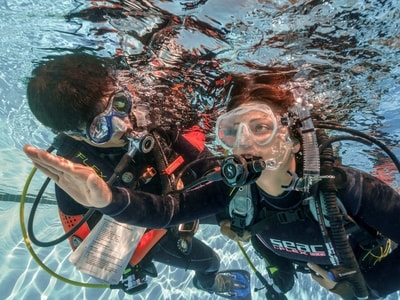
Therefore, while we readily offer this program structure to people who are comfortable in water, we instead require non-swimmers to complete a training session in a shallow pool before ever touching the ocean. That way, participants will be able to practice using the dive equipment and doing the skills in a more controlled environment. If they find themselves uncomfortable at any time while underwater, they can just stand up. If they are having trouble with any of the skills, such as clearing the mask, or just overwhelmed with breathing underwater in general, the instructor can take as much extra time as needed to work with them. Given this mental comfort, even many swimmers choose to complete a pool session before diving in the ocean, which we happily oblige.
Once comfortable with the equipment and skills, the ocean experience becomes significantly less daunting. Now instead of being completely overwhelmed, you may go on to have the experience of a lifetime. Many non-swimmers have loved diving so much that they dedicate themselves to learning how to swim so they can earn a diving certification in the future.
Our dive school operates in this way to try to find a safe middle ground that allows non-swimmers to experience diving with added precautions in place. That said, there are other operations around the world that approach the issue differently. Some refuse to allow non-swimmers to dive under any circumstances. Others will not even ask whether or not you can swim before signing you up. Therefore, if you are a non-swimmer who wants to experience diving, it is always best to be upfront about it. Make sure the dive shop knows you may require more attention than a typical customer. Use your common sense in evaluating the measures put in place. For example, you probably want to make sure you are one-on-one with the instructor. You want to make sure you aren’t going straight into the ocean, unless there is a highly protected confined water area that offers pool-like conditions. Ensuring there are added precautions and using your common sense will increase the likelihood that you will have a great and memorable first diving experience.
Final Thoughts
As a non-swimmer, you can still experience diving with a trial under the right training conditions. Make sure that the dive operation is taking added precautions that may not be otherwise considered with customers who can swim. Do not under any circumstances attempt to get a diving certification if you cannot swim. PADI standards explicitly require swimming and/or floating ability to become certified. So, after you’ve completed your trial and fallen in love with diving, sign up for swimming lessons to get that certification!
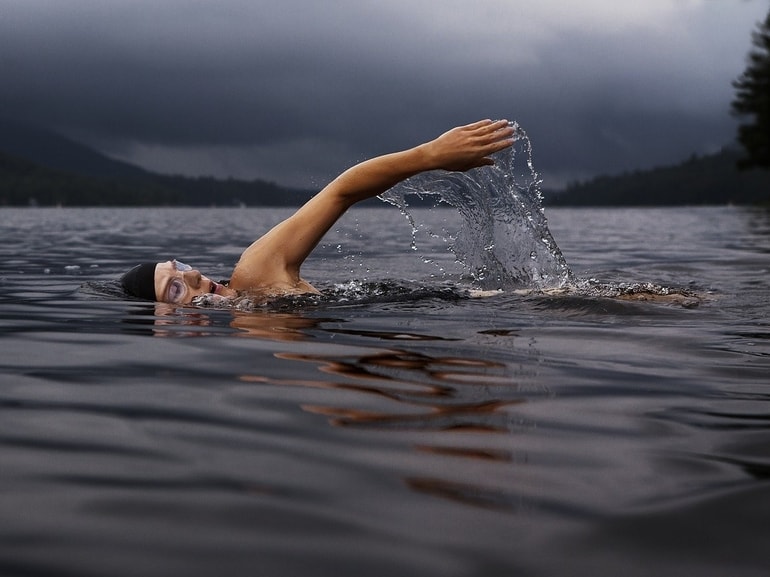
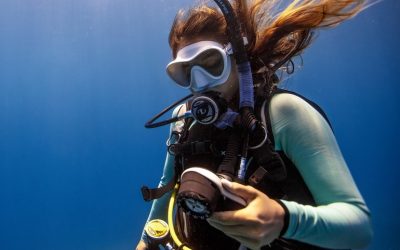
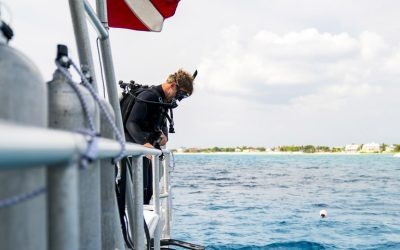
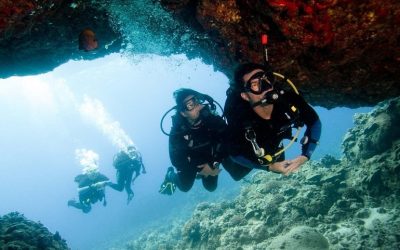
0 Comments